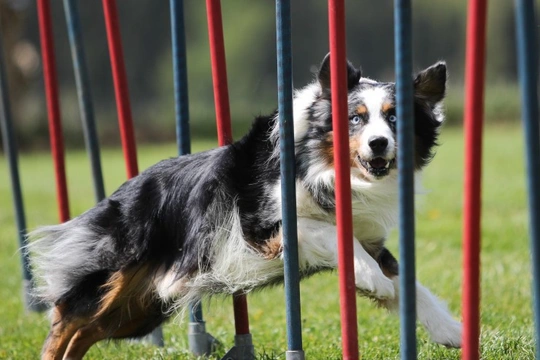
How to improve your dog’s agility score
Agility is one of the most popular and exciting of all canine sports, for the dogs, their handlers and spectators alike, which means that a significant amount of dog owners get involved in the sport at some level!
Whilst some people and their dogs only take part in informal agility meets for fun and exercise, competing and moving up the rankings is a big part of the lure of agility for many dog owners, and it can of course be very satisfying to score well, see your dog improve, and move up through the grades.
There is no getting away from the fact that agility is hard work, both physically and mentally, for both dog and owner-and it also requires a strong bond between dog and owner, clear channels of communication, and lots of practice! This means that there is no shortcut or cheat to improving your dog’s score, but regardless of the level that your dog competes at, developing a good insight into their performance, weak points and limitations can all help you to improve your performance.
In this article, we will share some tips, tricks and advice on how to improve your dog’s agility score, and how to identify your weak areas to work on. Read on to learn more.
Communication
Communication between dog and owner is one of the core keys to a good agility performance, and successful agility dogs are continually looking to their handler for direction, assessing their next move, and adapting on the fly.
Any exercises that help to improve your dog’s communication and responsiveness when you give them commands can help to boost your score, both in terms of the speed and accuracy of your round.
Simply spending five minutes a day working with your dog on your communication and how you interact with each other will soon pay off-and using exercises that require your dog to look to you for direction, adapt on the move and follow instructions all help.
Speed
Knocking a couple of seconds off your time can make all of the difference between placings when it all comes down to the wire, and working to improve your dog’s speed without sacrificing responsiveness and accuracy is important.
When you look at an agility course, it is important to plan out your route and the way in which you want your dog to approach things, and this is something for which the best approach can vary from dog to dog.
For instance, when it comes to tight turns, some dogs may be able to make the corner at speed, whilst others will need a wider angle in order to fulfil the requirements for accuracy and pace, and so getting to know your own dog and where their weak and strong areas are, and how to work with them, can make a difference to your performance on the day.
Accuracy
Your dog’s speed around the course is irrelevant if they rack up demerits and faults for their accuracy, and there is a fine line between boosting your dog’s speed around the course and ensuring that you do not compromise their accuracy.
Pinpoint the type of obstacles where accuracy is an issue for your dog-for instance, if they are apt to jump off the tilting plank before they hit the mark-and work on resolving the issue with practice.
Energy levels and fitness
Successful agility dogs need to be physically fit and have plenty of energy, and ensuring that this is the case for your own dog will provide them with the necessary grounding to achieve a successful round.
Your dog’s diet, feeding schedule, muscle tone and what sort of exercise they have all affects this, so review all of these things through the eyes of an agility handler in order to make necessary changes.
Outside factors
Agility dogs usually have to perform under potentially stressful situations, such as in front of a large audience, around a lot of other dogs, and often with a lot of noise and people around them. Experienced agility dogs won’t bat an eyelid at any of these things, but for those new to the sport, it can be rather unnerving, and potentially have an impact on their score.
Expose your dog to as much stimulus in their day-to-day lives as possible, such as going to crowded places, dog parks and other areas where your dog will face new challenges, and take your dog to spectate at shows and agility events when allowed to as well.
All of this will help to ensure that on the day of the competition itself, your dog will be calm and relaxed.
Practice
Practice is of course the key to a successful agility round, and this practice does not have to be only working with agility obstacles. Working on agility commands, turns, speed and other elements all help, and will bring the whole thing together on the day!
Guidance
Joining an agility club or group can be really helpful too, as other handlers and club officials will often be a valuable source of advice and insight when it comes to your own dog and their performance-having a different set of impartial eyes review your progress can help to keep you and your dog on the right track!



